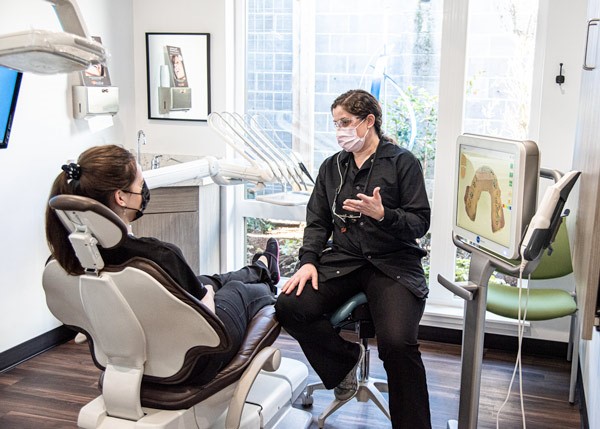At Compassionate Dentistry of Grants Pass, Oregon, we believe in the importance of maintaining good…

Manual vs Electric Toothbrush
Did you know you should be replacing your toothbrush every 3-4 months? If you’re due for a change, consider if it’s time to switch to a different type of toothbrush. Whether you’re using manual or electric, there are pros and cons to each. From cost to effectiveness, here are the good and bad aspects of each type of toothbrush.
Electric:
Electric toothbrushes are considered the “fancier” toothbrush. From their rapid speed to the occasionally high price tag, there are certain things people love and hate about their electric toothbrushes. Let’s start with the positives. Electric toothbrushes are shown to do a better job at removing plaque, including on those with braces. While you might do a few hundred rotations per minute with a manual toothbrush, electric toothbrushes average out at about 1000 spins per minute or more. Those are some clean teeth! They also have built-in timers, so you know when to switch to different quadrants of your mouth and how long to stay in each. Another added bonus is they are great for those with limited mobility. Whether you have an illness that makes movement hard, arthritis, or other types of disability, an electric toothbrush should make it easier to clean your teeth and do it well. You deserve to have clean teeth regardless of age or ability.
There are, however, some drawbacks to electric toothbrushes. The first is expense. While it’s not uncommon to find good sales on such electronics, a good electric toothbrush can be $70-200. They also have the ability to break. As with most electronics, electric toothbrushes have a shelf life. The body does need to be replaced every few years due to general wear and tear, which is definitely something to keep in mind. That being said, if the better effectiveness of the electric brush saves you from one cavity, or preventing periodontal disease, it has more than paid for itself!
Manual:
Now we come to the old faithful: the manual toothbrush. Did you know the first mass-produced toothbrush came out in the late 1700s? That’s a really old faithful for you! The dependability and accessibility are the first of many positives to manual toothbrushes. Manual toothbrushes are available in a wide variety of sizes, colors, bristle types, and abilities. Some fold up for easy travel, others are specifically designed for different age ranges, and so on. Manual toothbrushes also tend to be more affordable than electric toothbrushes. You can get a manual toothbrush for pennies on the dollar compared to electric toothbrushes. This only adds to their accessibility. Another great reason to go for a manual toothbrush is for travel. Whether you choose to use one just for your trip or you travel frequently and can’t bring an electric toothbrush with you, a manual toothbrush is very convenient. And, if you adhere to the American Dental Association’s (ADA) tooth brushing guide, you should still be able to have a good brushing.
But, of course, there are some downsides to manual toothbrushes. One of the main ones is that you’re more likely to brush too hard with a manual. Manual toothbrush users have been found to use more pressure on their teeth and gums, causing erosion and breakdown of the tissue and enamel. They also need to be replaced more often than electric toothbrushes. Sure, you still have to replace the head of electric toothbrushes, but if it’s going to be faster and more effective, it’s worth it!
Whatever you decide, take a look at the ADA tooth brushing guide to make sure you’re taking proper care of your teeth. You can also have Dr. Sara Riechers and her team teach you or your young ones the right way to brush. If you have any questions about the pros and cons of different types of toothbrushes, give Compassionate Dentistry a call. We can answer all your oral hygiene questions and get you scheduled for a cleaning and exam while we’re at it! Visit our website for more information on services, staff, and ways to contact us.



